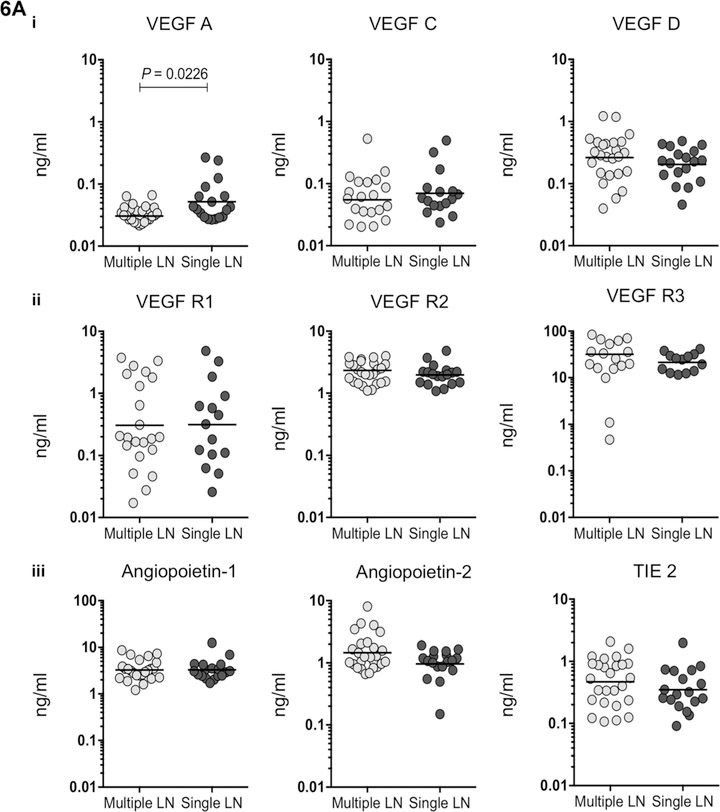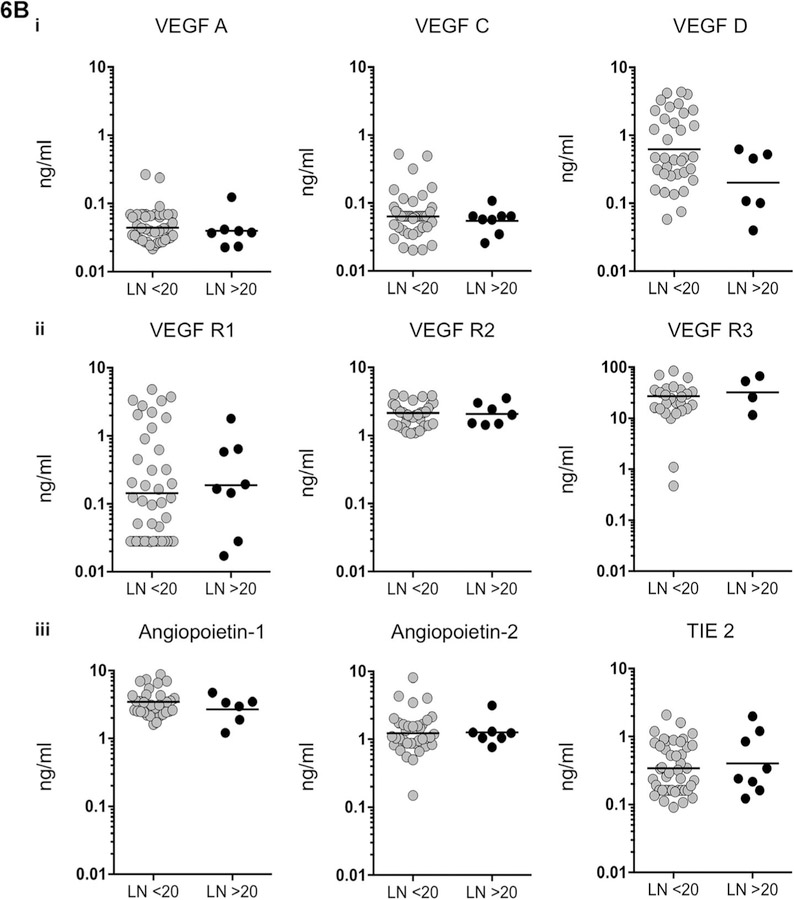Figure 6.
A) No association between levels of angiogenic factors and lymph node number was observed in individuals with TBL. Association between systemic plasma levels in single vs. multiple lymph nodes in: i) VEGF (A, C and D), ii) their receptors (R1, R2 and R3) and iii) angiopoietin (Ang-1, 2 and TIE2) were examined. Data are shown as scatter plots, with each circle representing a single individual. P values were calculated using the Mann-Whitney U-test. B) No association between levels of angiogenic factors and lymph node size was observed in individuals with TBL. Levels of circulating angiogenic factors are shown in two clusters of lymph nodes (the size of the lymph node calculated using vertical and horizontal length and represented as < or >20 cm). i) VEGF (A, C and D), ii) their receptors (R1, R2 and R3) and iii) angiopoietin (Ang-1, 2 and TIE2) were examined. Data are shown as scatter plots, with each circle representing a single individual. P values were calculated using the Mann-Whitney U-test. VEGF = vascular endothelial growth factor; LN = lymph node; VEGF-R = VEGF receptor; TIE2 = tyrosine kinase with immunoglobulin-like and epidermal growth factor-like domains 2; TBL = tuberculous lymphadenitis.


